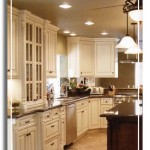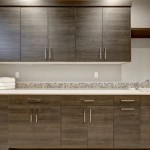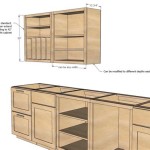How To Install Kitchen Cabinets On Tile Floor
Installing kitchen cabinets directly on a tile floor presents unique challenges. While some prefer installing cabinets on a subfloor before tiling, situations may arise where installation on existing tile is necessary. This article provides a comprehensive guide for installing kitchen cabinets on a tile floor, emphasizing stability and longevity.
Planning and Preparation: Accurate measurements are crucial for a seamless installation. Begin by meticulously measuring the kitchen space, noting the locations of plumbing and electrical outlets. These measurements will inform the cabinet layout and ensure proper alignment. Carefully examine the tile floor for any cracks or unevenness. Minor imperfections can be addressed with leveling compounds, while significant issues may require professional tile repair before cabinet installation.
Essential Tools and Materials: Gather all necessary tools and materials before starting the installation process. This includes a drill, appropriate drill bits for both tile and wood, a level, a stud finder, measuring tape, a pencil, safety glasses, shims, construction adhesive, screws designed for securing cabinets to the wall, and silicone caulk. Having everything readily available streamlines the installation and prevents interruptions.
Creating a Level Base: Ensuring a perfectly level base is paramount when installing cabinets on tile. Use a long level to check for any unevenness across the entire floor area where the cabinets will be placed. Small discrepancies can be corrected using thin-set mortar or leveling compound. Apply the chosen material according to the manufacturer’s instructions and allow it to dry completely before proceeding. For larger uneven areas, consider using plywood underlayment cut to fit the cabinet footprint. This provides a stable and level surface for installation.
Marking Cabinet Positions: Once the base is level, accurately mark the cabinet positions on the tile floor using the measurements taken during the planning phase. A chalk line helps create straight lines for cabinet placement. Double-check these markings to ensure they align with the planned layout and account for any plumbing or electrical fixtures.
Applying Construction Adhesive: Construction adhesive provides a secure bond between the cabinets and the tile floor. Apply a continuous bead of adhesive to the back of the base cabinets, ensuring it covers the entire area that will contact the tile. Follow the manufacturer's instructions regarding application and drying time. This adhesive enhances stability and prevents the cabinets from shifting over time.
Positioning and Securing Base Cabinets: Carefully position each base cabinet according to the markings on the floor. Use shims to level the cabinets both front-to-back and side-to-side. Ensuring a perfect level is crucial for installing countertops and upper cabinets later. Once leveled, secure the base cabinets to the wall studs using appropriate screws. Predrilling pilot holes helps prevent the cabinets from cracking. Use a level to re-check cabinet alignment after securing them to the wall.
Installing Upper Cabinets: After the base cabinets are securely in place, install the upper cabinets. Use a stud finder to locate wall studs and mark their positions. Support the upper cabinets while attaching them to the wall studs with screws. Clamps or temporary supports can be helpful during this process. Ensure the upper cabinets are level and aligned with the base cabinets. Shims can also be used for fine adjustments.
Sealing Gaps and Finishing Touches: Once all cabinets are installed, apply a bead of silicone caulk along the joint where the back of the cabinets meets the wall. This seals any gaps and prevents moisture from entering behind the cabinets. Wipe away excess caulk with a damp cloth. Finally, install cabinet doors, drawers, and any remaining hardware, completing the installation process.
Considerations for Tile Type and Condition: The type and condition of the existing tile can influence the installation process. Unglazed or textured tiles offer better adhesion than smooth, glazed tiles. If working with smooth tiles, consider lightly sanding the contact area to improve adhesion. Damaged or loose tiles should be repaired or replaced before cabinet installation to ensure a stable and level surface.
Working with Uneven Subfloors: Significant unevenness in the subfloor beneath the tile can complicate the installation process. In such cases, using a plywood underlayment is highly recommended. Cut the plywood to fit the footprint of each cabinet and secure it to the subfloor before installing the cabinets. This creates a uniform and stable base for the cabinets, mitigating the effects of the uneven subfloor.
Importance of Proper Shimming: Shims play a vital role in achieving a level and stable cabinet installation. Using a combination of different shim thicknesses allows for precise adjustments. Be sure to use enough shims to provide solid support. Once the cabinets are securely fastened, trim any excess shim material for a clean finish.
Ensuring Proper Ventilation: Proper ventilation is critical, especially for base cabinets housing sinks and dishwashers. Ensure adequate spacing around plumbing lines and appliances to allow for airflow. Cutouts in the back of cabinets for plumbing and electrical connections should be sealed with appropriate gaskets or sealant to prevent moisture infiltration while still allowing for ventilation.

Should You Install Tile Floor Before Or After Cabinets Angi

Should You Install Tile Floor Before Or After Cabinets Angi

Do You Install Tile Flooring Or Kitchen Cabinets First

Should You Install Tile Floor Before Or After Cabinets Angi

Should You Install Tile Under Cabinets

Can You Replace Kitchen Flooring Without Removing Cabinets Proline Range Hoods

How To Install Base Cabinets The Home Depot With This Old House

What Should You Install First Tile Floors Or Cabinets
.jpg?strip=all)
Should You Install Tile Under Cabinets

How To Install Level Tile Flooring Under Kitchen Cabinets Stove Dishwasher
Related Posts








